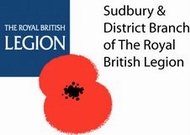|
3/9166 ‘Z’ Company, 2nd Battalion, Suffolk Regiment
George Parker was born in Sudbury around 1883 and was the son of David and Sarah Parker (née Barrell). His father was ‘a horsekeeper’ and the family lived at 23 Mill Lane together with his mother’s sister Mary Barrell.
George was employed as a groom and a labourer before he enlisted as a regular soldier in August 1901 to serve with the Suffolk Regiment (formerly 5816). His service record describes him as 5ft 5¼ ins in height, weighing 116lbs and with a 33 inch chest. He had blue eyes, light brown hair and a fair complexion. George served overseas with the regiment in India, Malta and Egypt. He was promoted to Lance Corporal in January 1902 but was demoted only four months later due to misconduct.
George was discharged in August 1913 after twelve years service. He would have been a reserve and been recalled at the outbreak of war and first served in France on 3 November 1914. The 2nd Battalion was part of the British Expeditionary Force (BEF); 80,000 troops hastily assembled from serving soldiers and reservists to help strengthen the French defences as the Kaiser’s army marched into Belgium. The battalion fought a heroic rearguard action at Le Cateau (26 August – 1 September 1914) refusing to surrender until they were finally overwhelmed. Most of those still alive were taken prisoner; it is most likely that George was sent as a replacement. He served alongside other Sudbury men including Harry Barber, Frederick Felton and Clement Francis at this time.
The battalion formed part of 8th Brigade, 3rd Division; in the spring of 1915 the battalion were in the trenches in the Ypres Salient and although on constant readiness were not required to attack the enemy during the Second Battle of Ypres (22 April – 25 May). In October the battalion transferred to 76th Brigade.
By the summer of 1916 the battalion had moved to France and saw action in the opening phases of the Battle of the Somme (1 July – 18 November) at the battles of Albert (1 – 13 July), Bazentin (14 – 17 July) and Delville Wood (15 July – 3 September). On 30 August 1916 George was reported as ‘wounded’ in the Suffolk and Essex Free Press.
It is not known when George returned to his unit. The battalion was in the trenches from 6 November preparing for an attack in the final phase of the Battle of the Somme at the Battle of Ancre The attack was postponed twice and finally went ahead on 13 November. From ‘The History of the Suffolk Regiment‘ – ‘At 5am the first wave floundered forward into No Man’s Land – in reality a sea of mud in which movement was barely possible. Three-quarters of an hour later the attack began. The mist which hung about over low ground thickened as the smoke of the barrage increased, making direction extremely difficult to maintain. Within a very short time all the officers leading companies had fallen, and owing to a lack of leaders no real progress was made. In spite of atrocious weather conditions prevailing, portions of the leading Suffolk companies actually reached the German second line. But all was in vain and the battalion having been reorganised in its original front line remained there for the rest of the day’.
George was killed in action on 16 November 1916 and lies buried in Bertrancourt Military Cemetery, Somme, France. A Cross of Remembrance was laid by his grave in September 2016. He was awarded the 1914 Star, British War Medal and Victory Medal.
George would have served alongside other Sudbury men who would lose their lives fighting on the Somme including; Charles Goody, Alec Farrance, Percy Partridge and Gilbert Smith.
Back to Roll of Honour
|




